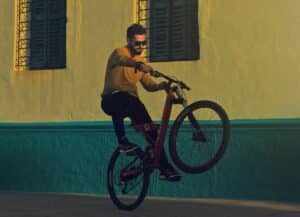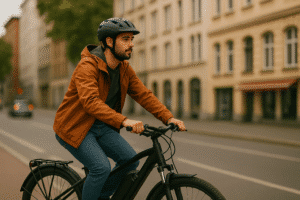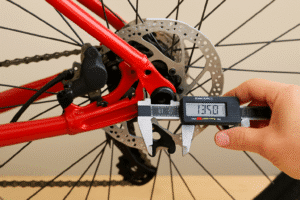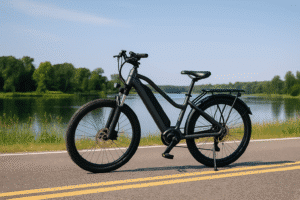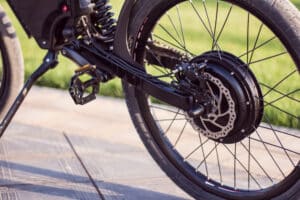Most electric dirt bikes go anywhere from 15 mph to 85+ mph, depending on the model. That’s a huge range, and it really comes down to the type of bike, how it’s built, and how you’re riding it.
In this article, I’ll walk you through real-world speed ranges, what influences those numbers, and how some riders safely push their bikes to go even faster.
Whether you’re looking for a beginner-friendly bike or want to see what today’s high-performance models can really do, you’ll get a clear picture here.
Key Takeaways:
- Electric dirt bikes typically reach speeds between 15 mph and 85+ mph, depending on the model and setup.
- Motor power, battery voltage, terrain, and rider weight all influence how fast your bike can actually go.
- Entry-level bikes top out around 30 mph, while racing-grade models can exceed 85 mph on open terrain.
- Upgrades like a more powerful motor or higher-voltage battery can increase speed, but should be done carefully.
- Street-legal speed limits are usually capped at 28 mph, but off-road riding offers more flexibility.
How Fast Can an Electric Dirt Bike Go?
Most electric dirt bikes have a top speed between 15 mph and 85+ mph, with entry-level bikes at the lower end and high-performance models pushing the limits.
If you’re just getting into e-dirt bikes, you’ll likely start with something around 20–30 mph. These are great for casual trail rides or younger riders.
But mid-tier bikes can reach 50 mph, which already feels fast off-road. At the top end, there are racing-grade machines that can hit 80 or even 100 mph.
That’s serious speed, especially when you’re riding over dirt, rocks, and hills. But raw numbers don’t tell the whole story; how fast your bike actually goes will depend on a few key things, which we’ll get into next.
Average Speeds by Type of Electric Dirt Bike
Electric dirt bike speeds vary by category. Here’s a quick breakdown of typical top speeds based on the type of rider and bike:
| Type | Top Speed Range |
| Entry-Level (Kids/Beginners) | 15–30 mph |
| Mid-Range (Recreational) | 30–50 mph |
| High-Performance (Advanced) | 60–85+ mph |
| Racing-Grade or Tuned | 85–100+ mph |
What Affects the Top Speed of an Electric Dirt Bike?
Several things determine how fast your electric dirt bike can actually go. Some are built-in, like motor power, while others depend on where you ride or how much you weigh.
Motor Power (Watts or Kilowatts)
The motor is what gives your e-dirt bike its power. In most cases, the more watts or kilowatts the motor has, the faster the bike can go.
- Entry-level motors are usually around 250W to 1000W. These are fine for kids or light trail use.
- Mid-range bikes tend to have motors between 1500W and 3000W, which can deliver top speeds around 40–50 mph.
- High-end models might pack 5000W or even 10,000W, letting them hit speeds of 70 mph and beyond.
Motor power also affects acceleration. A 10kW motor, for example, not only gives you more top-end speed but also gets you there faster, especially on open trails.
Battery Voltage and Capacity
Speed isn’t just about the motor. The battery’s voltage and capacity play a big role too.
- Voltage (V) affects how much current flows to the motor. A higher voltage system (like 72V) generally means faster acceleration and higher top speed than a 36V or 48V setup.
- Capacity (Ah or Wh) determines how long the battery can support high-speed riding. A low-capacity battery might not sustain top speed for long before voltage drops.
If you’re planning longer rides at faster speeds, you’ll want a high-voltage battery with enough capacity to keep up.
Terrain and Riding Surface
You won’t get the same speed on a rocky hill as you would on a smooth dirt trail. Terrain makes a big difference.
- On flat, hard-packed surfaces, your bike can get closer to its rated top speed.
- On loose gravel, steep inclines, or muddy trails, traction and resistance will slow you down.
- Technical trails may also require more braking and lower speeds for safety.
Even wind and elevation changes can slightly affect top speed in the real world.
Rider Weight and Bike Setup
Your weight, plus any gear you’re carrying, impacts how fast the bike feels and performs. Heavier riders generally see slower acceleration and slightly lower top speeds, especially on inclines.
Bike setup matters too:
- Tire pressure affects rolling resistance.
- Suspension settings can influence handling at higher speeds.
- Even little things like a backpack or heavy accessories can add drag.
If you’re chasing speed, every pound counts. Some riders even swap parts for lighter components to shave off weight.
Related article: Best electric bike for tall riders
Electric vs Gas Dirt Bikes – Is Electric Fast Enough?
Electric dirt bikes are fast enough to compete with many gas-powered models, especially in off-road and trail riding scenarios. While top-end gas bikes still edge out in raw speed, electric dirt bikes offer instant torque, quieter rides, and lower maintenance, making them a strong alternative for both beginners and experienced riders.
Electric models continue to close the gap with gas bikes as battery and motor technology improves. In real trail conditions, many riders actually prefer the smooth, responsive feel of an electric bike.
If you’re not racing professionally, you’ll likely find e-dirt bikes fast, fun, and more than capable for most riding styles.
Here’s how they compare:
| Feature | Electric Dirt Bikes | Gas Dirt Bikes |
| Top Speed (Avg) | 15–85+ mph | 40–100+ mph |
| Acceleration | Instant torque, fast off the line | Strong, but with throttle delay |
| Noise Level | Quiet | Loud engine noise |
| Maintenance | Low (no oil or gas) | High (engine upkeep, fuel) |
| Emissions | Zero emissions | Produces exhaust |
| Ride Feel | Smooth and responsive | Raw and rugged |
How to Make an Electric Dirt Bike Go Faster
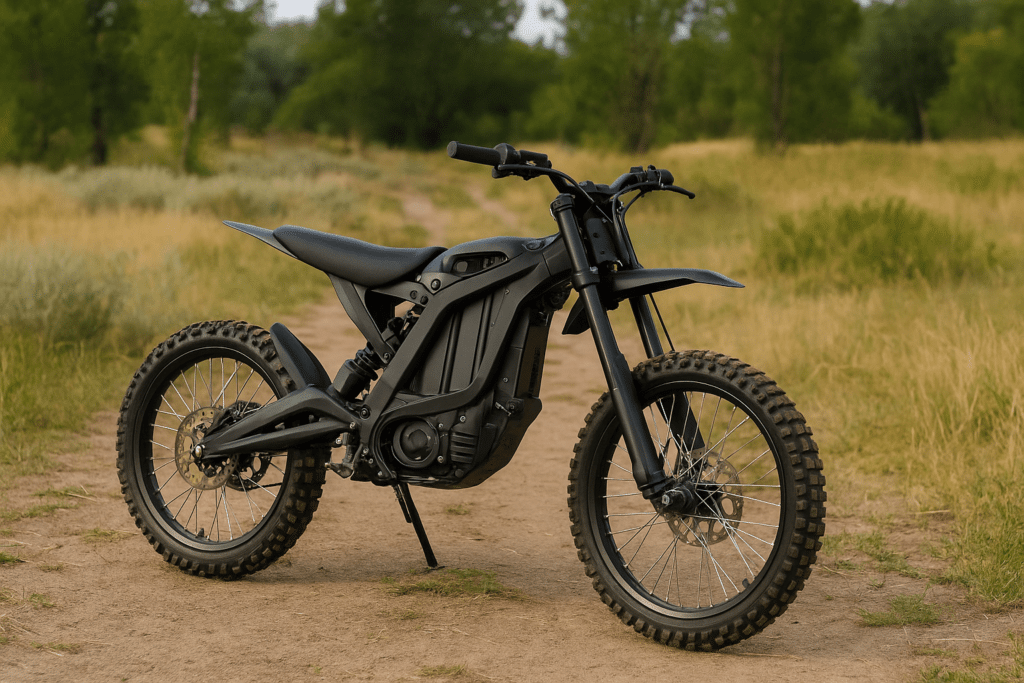
Here’s how to make an electric dirt bike go faster: upgrade the motor, use a higher-voltage battery, adjust gearing, reduce weight, and tweak software or speed limiters if available.
Below, I’ve broken down each method in detail so you can make smart, safe improvements.
Upgrade the Motor or Controller
The motor is the heart of your electric dirt bike’s power system. If you’re maxing out your current motor and still want more speed, upgrading to a higher-wattage motor is one of the most effective changes.
- A jump from 1000W to 3000W can raise your top speed by 10–20 mph.
- Match the new motor with a compatible controller that can handle the higher output.
- Look for brushless motors, they’re more efficient and durable for high-speed riding.
Just make sure your bike frame, battery, and electronics can handle the extra load. An overpowered motor without the right support can overheat or cause controller failure.
Use a Higher Voltage Battery
Battery voltage directly affects your top speed and acceleration. More volts = more current = more performance.
- Going from a 48V to a 60V or 72V battery can unlock 5–15 mph more top speed.
- Make sure your motor and controller are rated to handle the extra voltage.
- Higher voltage batteries also provide stronger performance on inclines.
The downside? Higher voltage systems can drain faster at full throttle and may run hotter. Keep an eye on temperature and battery health if you ride aggressively.
Optimize the Gearing
Gearing changes can give you more speed or torque, depending on the setup.
- To increase top speed, use a larger rear sprocket or smaller front sprocket.
- This setup sacrifices some low-end torque, so it’s better for riders on flat terrain or open trails.
If your bike uses a chain or belt drive system, switching sprockets is usually a straightforward mod. You’ll feel the difference immediately—just don’t go too extreme, or you’ll lose climbing ability.
Reduce Weight
It might not sound exciting, but cutting unnecessary weight makes a noticeable difference in both acceleration and top speed.
- Swap steel parts for lighter aluminum or carbon components.
- Remove extras like heavy racks, toolkits, or thick mudguards if you don’t need them.
- Even riding with a lighter backpack helps over long distances.
Less weight = less drag on the motor. You won’t turn a beginner bike into a race machine this way, but it’s a good supporting change alongside other upgrades.
Firmware or Speed Limiter Adjustments
Many electric dirt bikes, especially street-legal or entry-level models, come with built-in speed caps or conservative power settings.
- Some bikes allow firmware updates or unlock codes from the manufacturer to increase speed.
- Others can be manually modified to remove speed limiters, but this can void the warranty or break local laws.
If your bike has a display unit, check if it includes programmable modes like ECO, Sport, or Turbo. Unlocking the full speed potential could be as simple as changing a setting or flashing new firmware.
Legal Limits for Electric Dirt Bike Speed
Speed limits for electric dirt bikes depend on how and where you’re riding. In most U.S. states, off-road use on private property or trails isn’t speed-restricted, as long as you’re not posing a danger to others.
That means if you’re riding on dirt trails, race tracks, or BLM land, your top speed is your call.
But if your e-dirt bike is street-legal or registered for on-road use, things change. Most laws cap street-legal e-bikes at 28 mph (Class 3), and you’ll need required equipment like lights, reflectors, and a plate.
Some high-speed e-dirt bikes can qualify as electric motorcycles, which means they’ll need to meet DOT requirements and possibly require a license and insurance.
Before making speed mods or taking your bike on public roads, check your local and state laws. The rules vary a lot depending on where you live.
Final Words
Electric dirt bikes have come a long way. These machines now hit speeds from 15 mph to over 85 mph, depending on how they’re built and where they’re ridden. Entry-level bikes are great for beginners and teens, while high-performance models offer serious speed for experienced riders.
What really controls the speed? It comes down to motor power, battery voltage, terrain, and rider setup. And if you’re looking to go even faster, there are safe ways to do that—like upgrading components or lightening the load.
Whether you’re riding for fun, trail exploring, or looking to improve performance, there’s an electric dirt bike out there for every skill level.
Looking to pick your first or next electric dirt bike? Check out our roundup of the best electric dirt bikes for adults.
FAQs
How long does an electric dirt bike run at full speed?
Most electric dirt bikes run at full speed for about 45 to 90 minutes, depending on battery size, motor efficiency, and terrain. Riding on flat ground helps extend the range.
Is 50 mph too fast for trails?
It depends on the trail. On wide, open dirt roads, 50 mph can be fine for skilled riders. But on narrow or technical trails with turns and obstacles, that’s way too fast. Speed should match the terrain and your skill level.
Do electric dirt bikes lose speed uphill?
Yes, especially on steep climbs or rough terrain. But electric motors offer instant torque, which helps maintain momentum better than gas bikes in some uphill conditions.
Can you ride an electric dirt bike in the rain?
Most electric dirt bikes are built with water-resistant components, but not all are waterproof. Light rain or damp trails are usually okay, but avoid submerging the battery or controller.
Is it safe to increase the speed of an electric dirt bike?
It can be, if done carefully. Upgrading parts like the motor or battery is common, but pushing beyond what the frame or brakes can handle can be risky. Always check compatibility and ride responsibly.
Do electric dirt bikes need regular maintenance?
Yes, but less than gas bikes. You’ll still need to check tire pressure, keep the chain clean, and make sure electrical connections are tight. A little routine care goes a long way in keeping your e-dirt bike fast and safe.
Michael Josh is a hands-on e-bike tester and reviewer at BoltBikers, known for putting every model through real-world rides before sharing his thoughts. With a sharp eye for performance, comfort, and build quality, he helps the team choose which bikes are worth featuring. Backed by years of experience in tech and gear reviews, Michael brings trusted, honest insights to help readers find the right e-bike for their needs.
